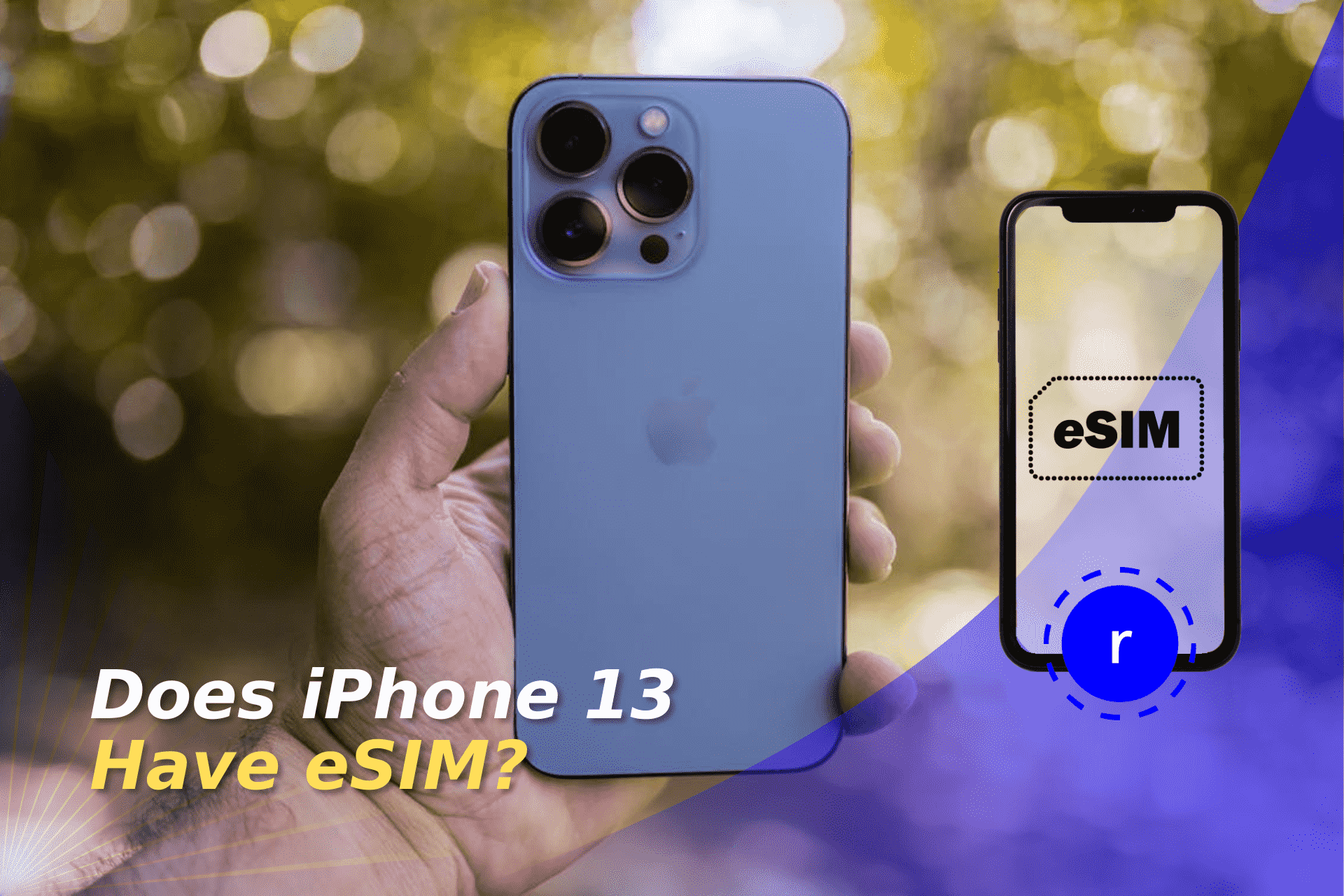The iPhone 8 does not support eSIM. The eSIM functionality was first introduced by Apple with the iP...
eSIM Cards
iPhone 13 is eSIM compatible. It has Dual SIM, so it can have a physical SIM and an eSIM simultaneously. This allows you to have two active numbers on a single phone. All iPhone 13 models support eSIM, and you can even have two eSIMs on a single phone.


An eSIM is safer than a standard SIM since it can't be taken out if your iPhone is stolen or you lose your iPhone. You don't need to swap physical SIM cards, which can be lost, and you don't need to wait for them to be sent to you if you're ordering an international one for travel.
However, not all phones support eSIMs. A lot of older devices don’t have the capability to use eSIMs, and it can also depend on where the iPhone was purchased, since some regions do not have this available.
Here we’ll outline all the information you’ll need to know about iPhone 13 eSIM compatibility.
Yes, eSIM is supported on iPhone 13. That means individuals can change and add phone plans without ever using a physical SIM card to give them increased convenience and independence. You have the ability to use two eSIMs simultaneously with a physical SIM card in iPhone 13 and other devices.
You might be wondering can all iPhone 13 models use eSIM and the answer is yes. All models of the iPhone 13 series—iPhone 13, iPhone 13 mini, iPhone 13 Pro, and iPhone 13 Pro Max—are eSIM card-supporting devices. With this feature, you can have a digital SIM card. You can choose to have this digital SIM card along with a physical SIM card or replace the physical SIM card with it. You can have two eSIMs together, apart from a physical SIM.
Before you get an eSIM for iPhone 13, there are a few things you should bear in mind. This includes compatibility and carrier support, along with how you activate it. Find out more details below:
There are a variety of ways to install an eSIM on an iPhone 13, including via QR code, transfer from another nearby iPhone, and manual entry of the details from your carrier. Follow the steps given below for easy installation.
You’ll also need to check that your carrier supports eSIM cards.
You can choose to install the eSIM from a QR code or transfer from a nearby iPhone. Under “Use QR Code,” you also have the option to manually activate the eSIM by providing the activation code and SM-DP+ address from your carrier.
You may then need to configure the eSIM for cellular data or mobile data. If “Allow Cellular Data Switching” is turned on, then you may be potentially charged on your other SIM.
Activating your eSIM on the iPhone 13 requires the use of a QR code that your carrier provides you with or by manually entering the eSIM details. More detailed activation instructions are as follows:
An eSIM on an iPhone 13 is really handy. It makes it more convenient and offers you flexibility. It also offers security for your phone. With an eSIM, switching SIM cards is easy. You can also have multiple profiles on one phone. This is really helpful if you travel a lot or if you would like to have work and personal numbers on one phone. It saves you the trouble of keeping two phones and not complicating your life.
A more detailed explanation of the benefits:
There are a couple of things you want to search for when it comes to finding the best eSIM carrier for your iPhone 13. These are global coverage and network speed, as well as security and compatibility.
Here's a closer look at what to search for:
Two of the best eSIM providers are Holafly and Airalo. Holafly is convenient and simple to use while overseas. Airalo has different options for global use and tailoring to local and regional needs as well.
While you may be researching if the iPhone 13 is eSIM compatible, not all iPhone models support eSIM. Since the XR and XS models, most iPhones have eSIM capability. In fact, iPhone 14 models, which were later purchased in the U.S., are eSIM only and no longer accept physical SIM cards.
iPhone eSIM supported models include: iPhone XR, XS, XS Max and later models such as the iPhone 11, 12, 13, 14, and 15 series as well as iPhone SE 2nd and 3rd generation but you might like to check the full list of eSIM compatible phones before purchasing an eSIM just in case.
Older models like the iPhone X and 7 are not eSIM supported.
There are a few ways you can tell if your iPhone 13 supports eSIM. One is to check for the IMEI. To do this, go to "Settings" and under "General", select "About". If the IMEI is a 15-digit number, then your iPhone will support eSIM. Another method is to go to "Cellular" or "Mobile Data" in "Settings" and see if it has the option to "Add eSIM".
An eSIM may not work due to reasons like incorrect activation, carrier setup, or telephone or network problems. You will also need to check that the plan you use allows Dual SIM service. Should you have past settings, you can then redo these in "Settings" > "About" in "General".
iPhone 13 can support two eSIMs because it also supports dual SIMs. It is, therefore, possible for you to use two phone plans simultaneously. You can use a single physical SIM card and an eSIM, for instance, or use two eSIMs. The device can store various eSIMs, although there can be just two at any given time.

